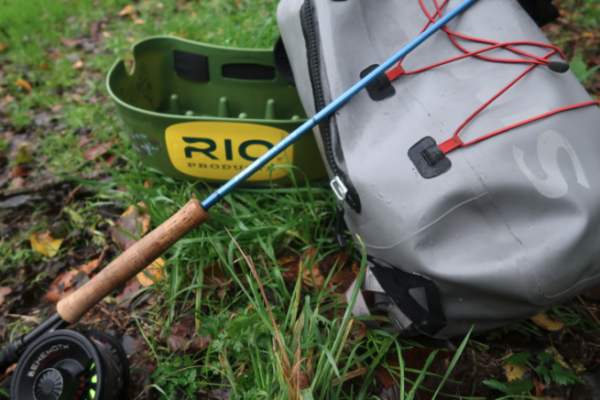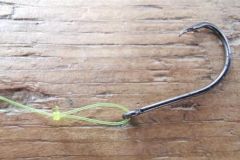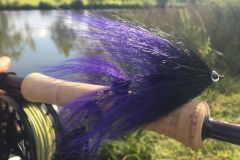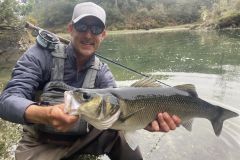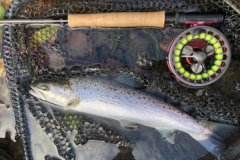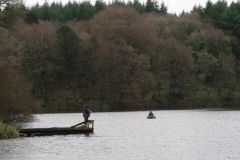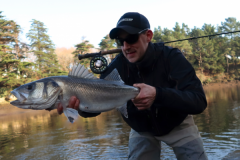Today's pike fly fisher uses equipment specifically developed for stalking this freshwater predator. All brands now offer "special pike" tackle. Pike rods and lines have been well developed for some time now.
Whereas some fifteen years ago, 8-power silks were commonly used, today 8- to 9-foot rods for 9- and 10-power silks are the norm.
Indeed, pike flies are much bigger and more voluminous than before, and increasingly "sophisticated". Modern pike anglers have flies with rattles (beads) in their boxes, appendages of all kinds including tails of various shapes, but also small paddles to emit more vibrations. The only way to fish comfortably is with the right equipment.
Bristle profile
All the fly lines on the market for pike fishing are WF or Weight Forward, followed by a fine line of identical diameter, the running line. They allow you to load the rod well and cast large pike flies, generally between 20 and 30 cm, or even more, at a good distance.
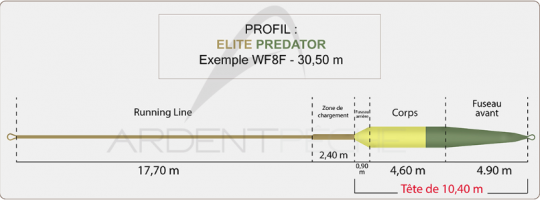
The length of the spindle depends on the brand and model, but also on the density of the silk. Generally speaking, the spindle is between 8 and 12 metres long. The shorter the spindle, the easier it is to load the rod. The longer the spindle, the thinner it tends to be, but the greater the casting distance.
Silk density according to fishing position and type of fishing
There are several silk densities to enable the angler to present his fly at different depths, whether in lake, pond, river or stream.
Nowadays, bristles for pike are :
- Floating
- Intermediate (slow or hover and fast)
- Slow plunge S3
- S5 fast plunger
- Very plunging S7
The most commonly used line is certainly the floating line, which allows you to fish on the surface (popper, mouse, frog type flies) and between the surface and 1 m depth.
This line is ideal for surface fly fishing in fine weather, but also for shallow waters along the edges. It's often an interesting spot to fish, as you can guess where a pike might be posted.

The intermediate line is the most versatile, as it allows you to fish very close to the surface if you retrieve quickly. Between two waters, if you take breaks. A little deeper, if you let it sink before starting your retrieve.
It can be used in a variety of situations, but is most commonly used either from a boat or float tube, or from shore to fish a deeper spot or look for pike closer to the bottom when they don't want to come up.
Plunging lines can be used either in rivers to counter the current, or when fishing in deep lakes or when you want to bring your flies down on breaks, close to the bottom, even in ponds that are not too deep (3 to 5 m).

Adapting to conditions
So, as with all exploratory fishing, whether for pike, sea bass or reservoirs, you need to use the right line for the position you're targeting, but above all for the behaviour of the fish in relation to the season.
From the shore, it's quite handy to have several reels to quickly change silks if you don't get any hits. Some anglers take two rods, but it's always a bit of a hassle to carry an extra rod.
On a boat, virtually all fly-fishing pike anglers have several rods mounted with one density per rod. Very often, one floating, one intermediate and one diving. This makes it possible to switch from one to the other depending on the configuration of the position, but also on the activity of the fish.
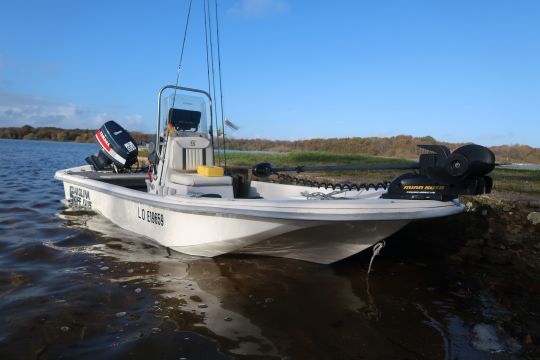
Look for the silk/fly combination of the moment
Some flies require a special fly line.
Personally, I often use flies with tails (dragon tail, wiggle tail, etc...) with an intermediate fly line that allows me to have a downstream swim of my fly line that pulls on the fly and activates the tail. But it also allows me to animate my flies without pausing too much in continuous swimming, mainly in "rolly polly".
Flies using hydrophobic materials or with large heads (to generate vibrations) generally have trouble sinking. In floating lines, flies may not fish properly. A slow intermediate or hover line may be the solution.
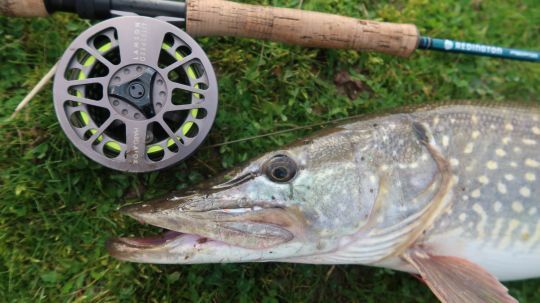
In conclusion, finding the right line density, the right fly and the right animation is the key to success. The parallel can be drawn with lure fishing, where you need to find the right weight for your soft lure, or the right swimming depth for your swimming fish.
So it's important to be well-equipped, but also to ask yourself the right questions to fish at the right depths and in the right places throughout the season.

 /
/ 